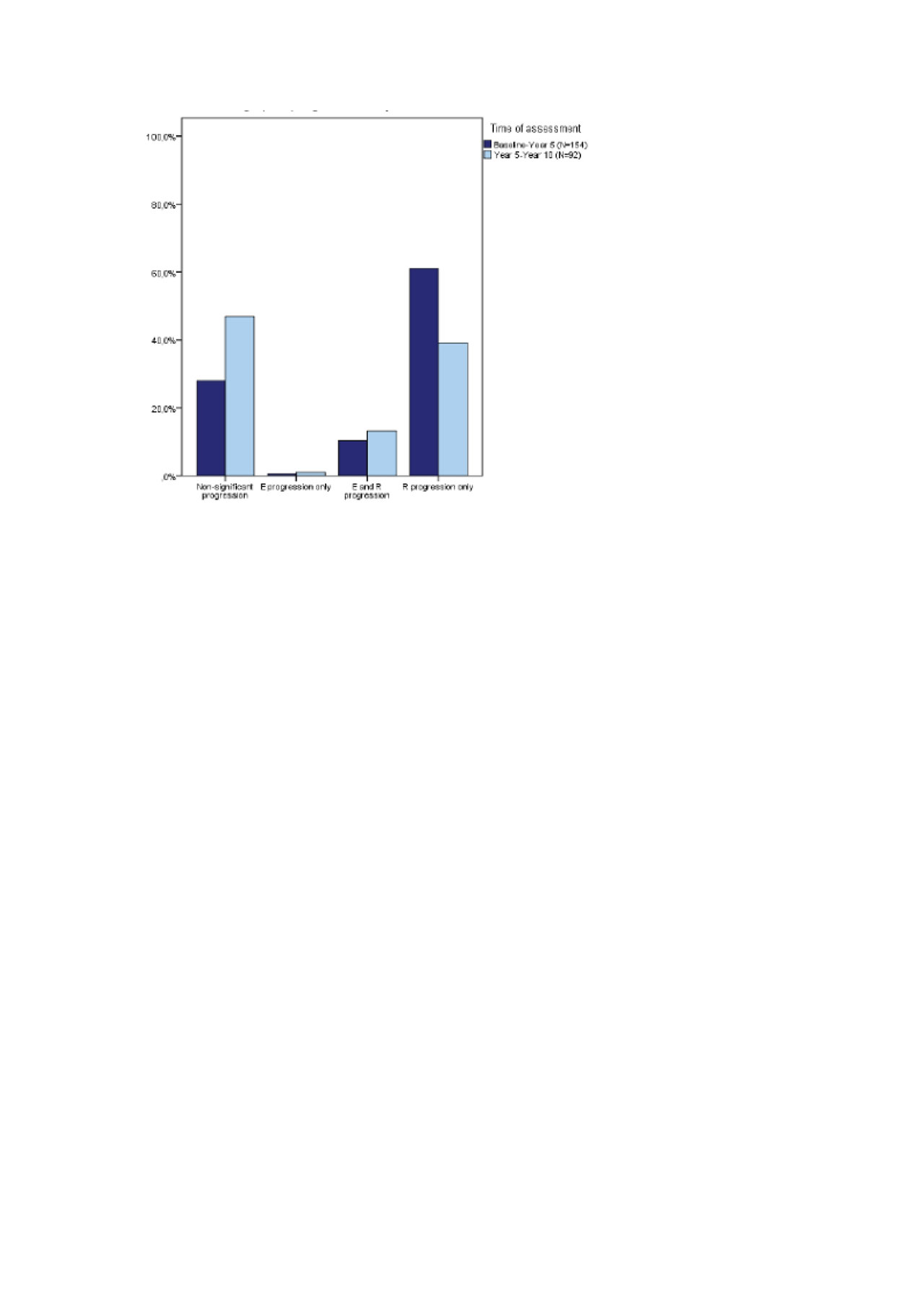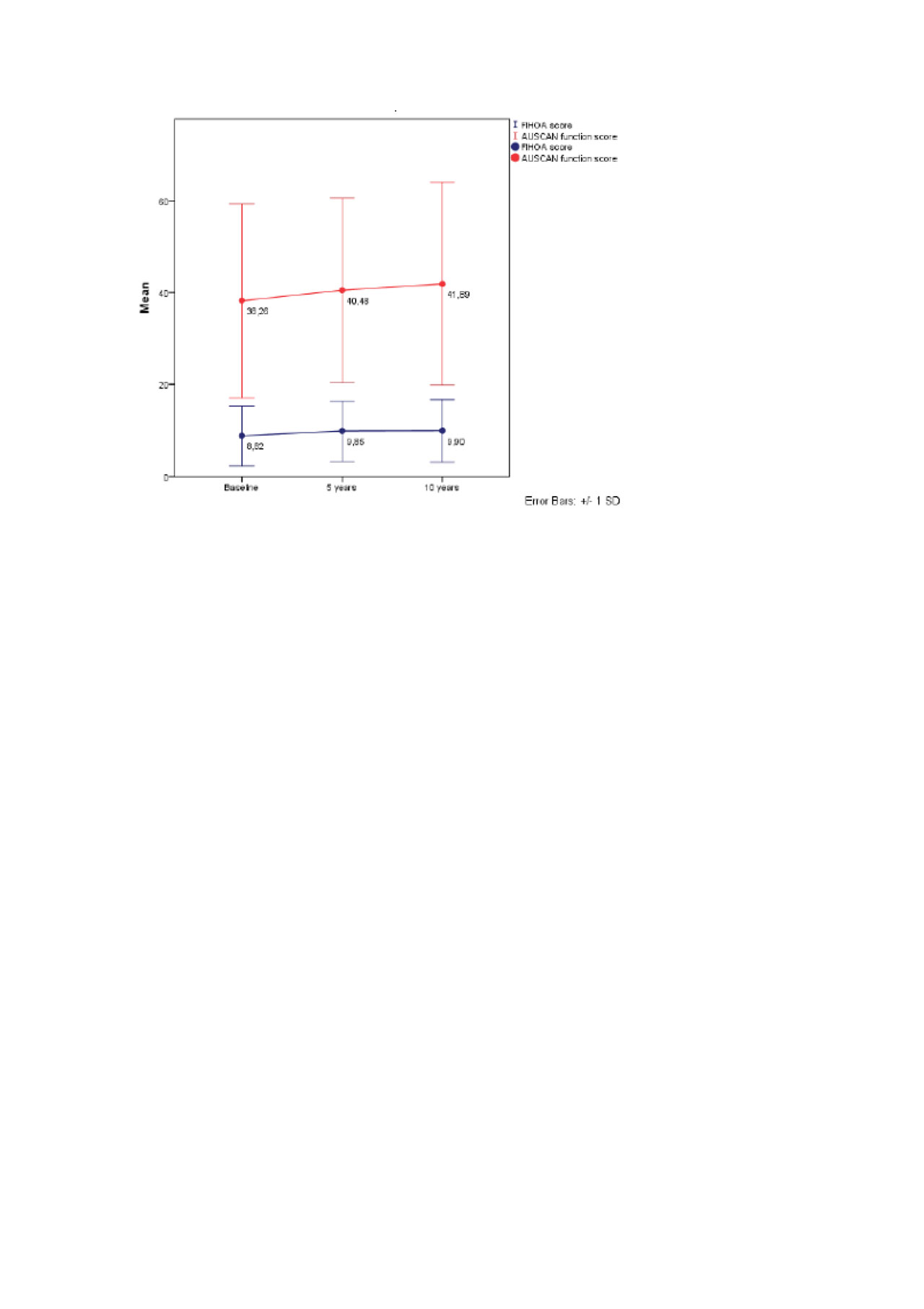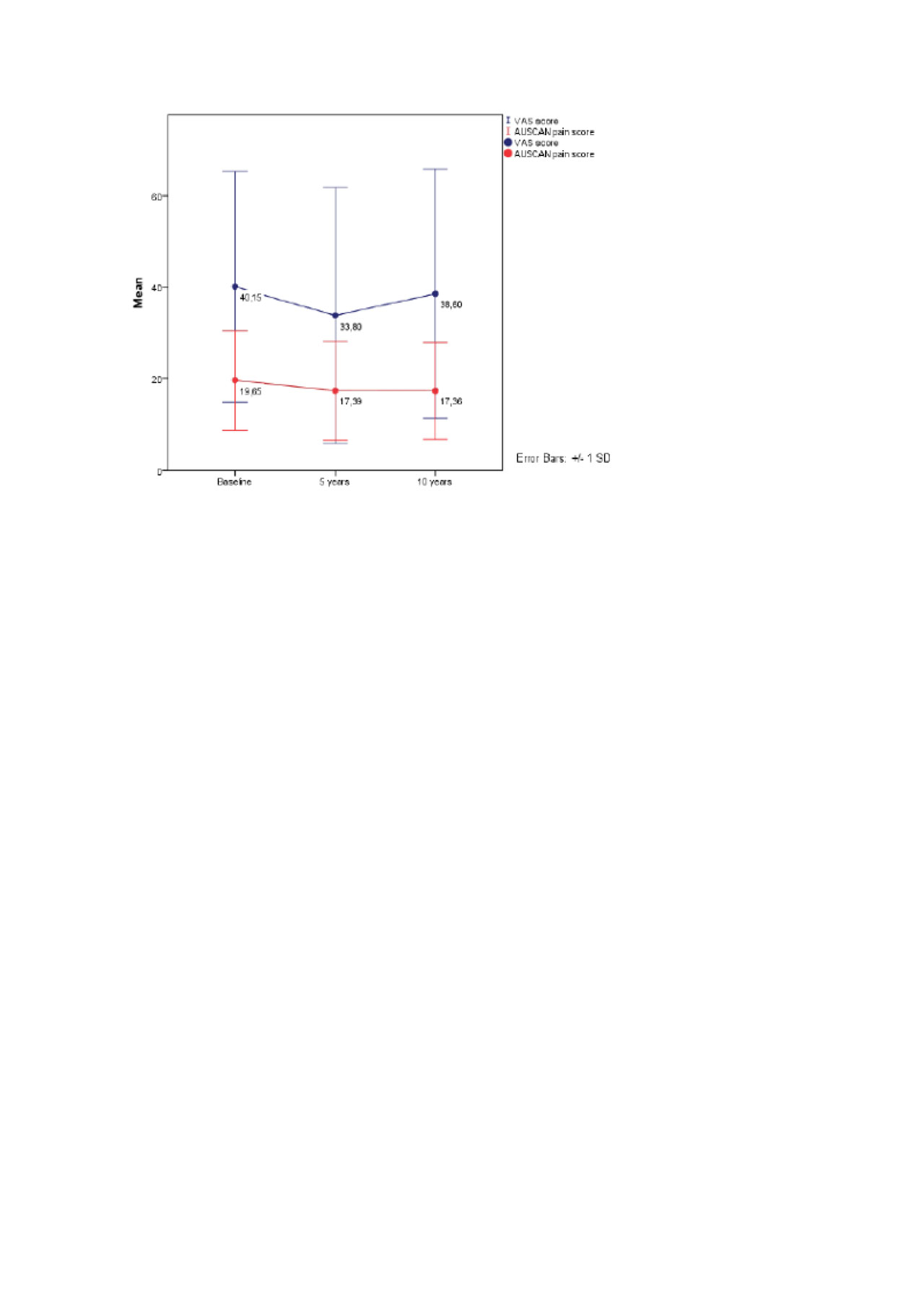Session Information
Session Type: Poster Session (Tuesday)
Session Time: 9:00AM-11:00AM
Background/Purpose: Limited evidence is available about natural disease progression in hand osteoarthritis (HOA). A previous study of the Ghent HOA cohort showed a positive association between soft tissue swelling, tenderness upon pressure and pain with radiographic progression (1). The aim of the study is to study natural radiographic and clinical disease progression in HOA after 10 years of follow up.
Methods: From 2007 to 2009 (baseline, T0), 270 patients with HOA were included in a Belgian HOA register. On average, the disease was already ongoing for > 12 years at baseline. A first follow up visit (T1) occurred after approximately 5 years (n = 154) and a 2nd (T2) after 10 years (n= 106). Presence of tender and swollen joints was assessed. Grip strength was measured. FIHOA and AUSCAN were completed. Pain was scored on visual analogue scale (VAS pain, 0 -100). Radiographs of hands were taken and scored according to the scoring system by Verbruggen and Veys (2). Patients were categorized into ‘non-significant radiographic progression’, ‘erosive (‘E’) progression only’, ‘‘E’ progression and remodeling (‘R’) occurring simultaneously’ and ‘‘R’ progression only’. Changes from N to S were considered non relevant. Longitudinal analyses were performed for patient related outcome measures from follow up (T1 or T2) to baseline (T0).
Results: After a mean follow-up of 9.7 years at T2, the majority of the patients (73.3%) showed any radiographic progression compared to baseline (figure 1). Exclusive ‘E’ progression is rare (0.6% from T1 to T0, and 1.1% from T2 to T1). Any ‘E and R progression’ is seen in 11% and 14.1%, resp. from T1 to T0, and T2 to T1. ‘R’ progression only is seen more often from T1 to T0 (61.1%) compared to T2 to T1 (39.2%)(p< 0.05). FIHOA and AUSCAN, increased numerically over time and statistically significant after visit T2 (p = 0.035 for AUSCAN and p = 0.017 for FIHOA) (figure 2). Pain (measured by VAS and AUSCAN pain subscale) did not consistently nor significantly change over time (figure 3).After a mean follow-up of 9.7 years at T2, the majority of the patients (73.3%) showed any radiographic progression compared to baseline (figure 1). Exclusive ‘E’ progression is rare (0.6% from T1 to T0, and 1.1% from T2 to T1). Any ‘E and R progression’ is seen in 11% and 14.1%, resp. from T1 to T0, and T2 to T1. ‘R’ progression only is seen more often from T1 to T0 (61.1%) compared to T2 to T1 (39.2%)(p< 0.05). FIHOA and AUSCAN, increased numerically over time and statistically significant after visit T2 (p = 0.035 for AUSCAN and p = 0017 for FIHOA) (figure 2). Pain (measured by VAS and AUSCAN pain subscale) did not consistently nor significantly change over time (figure 3).
Conclusion: HOA is a disease where significant radiographic progression is seen over time, with erosive progression being relatively rare and remodeling occurring frequently. While levels of pain remain similar over time, functional status does decrease. Future treatment goals in HOA should focus on preserving the functional status of HOA patients. Research is required to confirm this pattern of disease progression in a ‘early’ HOA cohort and amongst several subtypes of HOA.
References
1. Meersseman P, et al. OAC 2015;23(12):2129-33.
2. Verbruggen G and Veys EM. A&R 1996;39(2):308-20.
To cite this abstract in AMA style:
Pardaens L, Vanhaverbeke T, Vandercruyssen J, Wittoek R. Natural Disease Progression in Hand Osteoarthritis: Results from a Belgian Ten-years Prospective Cohort Study [abstract]. Arthritis Rheumatol. 2019; 71 (suppl 10). https://acrabstracts.org/abstract/natural-disease-progression-in-hand-osteoarthritis-results-from-a-belgian-ten-years-prospective-cohort-study/. Accessed .« Back to 2019 ACR/ARP Annual Meeting
ACR Meeting Abstracts - https://acrabstracts.org/abstract/natural-disease-progression-in-hand-osteoarthritis-results-from-a-belgian-ten-years-prospective-cohort-study/



